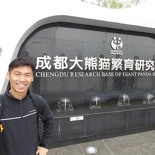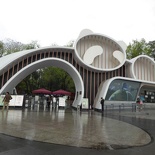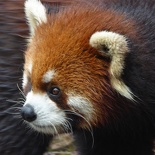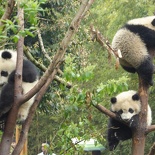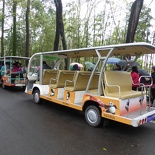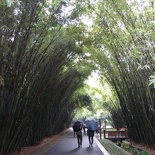The Chengdu Research Base of Giant Panda Breeding is one of China’s main facilities for the study, breeding and housing of one of China’s natural treasures in Sichuan China. There are less than 1,500 pandas living in the wild, 80 percent of which are in Sichuan Province. The facility is a non-profit research and breeding facility for giant pandas and other rare animals. Founded in 1987 with 6 giant pandas rescued from the wild, the captive panda population has grown today to over 80 pandas with 124 panda births to date at the facility itself. The facility too has partnered with Zoos around the world to enable conservation of pandas.
Getting there
Located about 10km out of North East from central Chengdu city, taxi fare to Panda research facility 45 yuan (~$10 SGD) from the central city (Tianfu/Chunxi road) area and about a 40 min drive in moderate traffic. There are no metro train stops near the facility, as such, a Taxi ride there is recommended as Chengdu’s licensed (green VW) Taxis are safe, affordable and convenient. The bus option involves a bus change and takes twice the travel time (not recommended). Entry to the park itself is 90 yuan.
The zoo
I found the visit a rather pleasant one. The zoo is large, clean and very well taken care of. Even the lawns are well kept. There are lots and I mean literally tons of pandas, where most Zoos outside of China only make do with 2 (loaned) Pandas as their main Panda attraction. This Chinese sanctuary is home to over 100 pandas and red pandas. The pandas are housed in each of their pens alone or paired. Signs outside each of the enclosure will provide you more of their bio information. You can even enter a red panda sanctuary where you can have the animals free roam in the enclosures too.
The best time to visit the facility is from 9- 10am. There are two feeding times in the mornings- one in the wee mornings before opening and one at 9am throughout the park. This is when the animals are the most active and wandering about. Though the park opens till 6pm, you won’t be able to catch as much given most the pandas usually end up sleeping for the rest of the day past mealtime and the afternoons.
On my morning visit, I was fortunate to see several active giant pandas, with several at play and the red pandas during feeding time. There were even keepers teaching the young Pandas how to climb tress! And do they look simply adorable on the trees! There are separate enclosures for both the pandas and red pandas, with the latter allowed to free roam in certain areas of the park. there are so many of them! There are even baby pandas up in the trees!
The park itself is compact, very walkable and well labeled with park map signs at every corner. I recommend forgoing the electric Tram rides which the park offers for an addition 10 yuan per person, as you get to better enjoy the lines of young and mature bamboo forests area the park. You also get to see more on foot, and have the flexibility to break from the main trail into the smaller trails at anytime into the one of the many Panda enclosures in the park, as well as relax by the park’s swan pond.
The park is good for half a day for about 3- 4 hours and a great way to spend a half day morning, from 9am till about 1pm, breaking for lunch back to Chengdu city.
See more photos of pandas at the Chengdu Research Base of Giant Panda photo gallery here.

